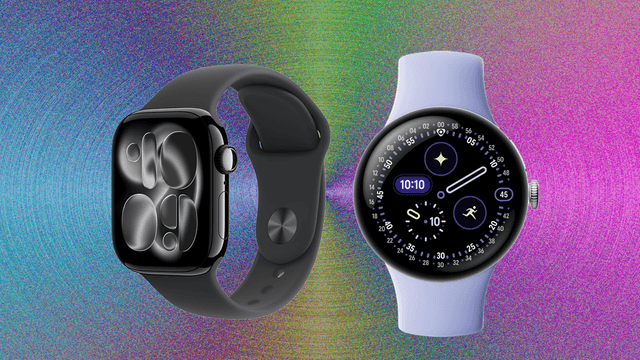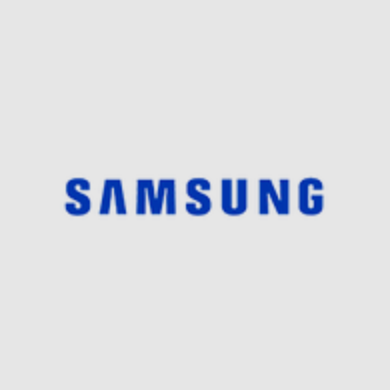The Best Laptops for College Students
All products featured on WIRED are independently selected by our editors. However, we may receive compensation from retailers and/or from purchases of products through these links. Learn more.
Featured in this article
College is when most people first get a laptop for themselves. They might have used an old Chromebook in high school or borrowed their parents’ PC, but as they're entering their university years, they need something that's their own. It's the device they'll take to classes, coffee shops, club meetings, and libraries—and rely on to achieve their academic dreams. But it's also the device they'll use to binge-watch shows and play games with roommates after hours.
I've been reviewing laptops for a decade, and after testing dozens of wallet-friendly laptops designed for college students, these are our recommendations on what to purchase before the school year starts. My picks range from traditional clamshell laptops to 2-in-1 computers and even tablets.
Be sure to check out our other back-to-school guides, including the Best Laptops, Best Cheap Laptops, Best Tablets, Best Laptop Bags, Best Student Email Discounts, and Best Dorm Gear.
Updated August 2025: We've added the Dell 14 Plus.
Do You Need a Laptop for College?
Yes, without a doubt. If you're heading off to live on campus, you'll most definitely need a laptop of some kind for your schoolwork. Alternatively, you can use a desktop in your dorm room paired with an iPad or some kind of note-taking device in class.
However, a laptop is likely a preferable device. It's extremely useful to take your work on the go with you as you're in between classes, studying in coffee shops, or just taking notes in lecture. Dorm rooms aren't known for being spacious, so having a laptop to take your studying to the library or a coffee shop would be a huge benefit.
What Kind of Laptop Is Best for College?
All our guidelines for choosing a laptop also apply to a device for college, including evaluating the quality of the display and chassis, along with ensuring that the laptop is fast enough for your work. Get something with at least 16 GB of RAM and 512 GB of storage and you'll be happy.
There are a couple of important things to consider specific to college. Portability and battery life are paramount. Regardless of your budget, you want something that will last throughout the day and won't weigh you down while carrying it from class to class. Anything over four pounds or so will start to feel noticeable in your backpack.
Overall dimensions are important too. Bringing a 16-inch laptop to class can feel obtuse given the size of college room desks. The same is true if you plan to bring your laptop to a crowded coffee shop or library. That's why 13-inch or 14-inch laptops are preferred. That being said, if you're a gamer or need a discrete GPU for your coursework, you may have to bite the bullet and buy something a bit larger.
Here are some other specs to consider:
- Windows: If you're getting a Windows machine, your main options for the processor are Intel and AMD, though Qualcomm is now a viable alternative with Copilot+ PCs. Each has its strengths and weaknesses. For a more complete guide to the differences, see our full guide to buying a laptop.
- Chromebooks: These browser-based machines use half a dozen different processors, most of which you've probably never heard of. There's a reason for that: Those processors are slow. My recommendation when buying a Chromebook is to stick with a Chromebook Plus machine. This is a new standard Google created to ensure a certain level of performance and polish with Chromebooks.
- MacOS: Apple has been making its own processors for a few years, like the latest M4 chip found inside the MacBook Air showcased below. More powerful models like the MacBook Pros feature the M4 Pro and M4 Max chips, which feature GPUs comparable with the discrete GPUs you find in Windows laptops. Our MacBook buying guide can help.
Regardless of which OS you choose, the minimum amount of RAM you want in your laptop is 8 GB. That's enough memory to keep your computer feeling snappy even if it's running under load. But these days, 16 GB has become the new standard, and you'll find lots of laptops around $800 that come with 16 GB. So, if you can afford it—especially if you plan to edit photos or videos as part of your coursework—go for 16 GB or even 32 GB.
The new default for storage is 256 GB, and it'll do if you're trying to save money. You can always use external storage if you need to add on. Spring for 512 GB or a terabyte if you can, though.
Screens vary tremendously, but don't settle for anything less than 1080p (or 1200p for 16:10 aspect ratio displays). For a 13-inch laptop, 1080p is sharp enough. If you're going with a bigger laptop, 2.5K or even 4K screens will improve the viewing experience. If you're trying to play games as well, be sure to get something with a higher refresh rate—120 Hz or 144 Hz will more than satisfy.
Don't forget you'll be lugging this thing around. It may well be tugging on your back for eight hours or more. One pound may not seem like much, but at the end of a long day of walking, you will notice the difference between a three-pound laptop and a four-pound laptop. Trust me. Also, maybe pick out a nice bag to carry your computer.
Similarly, battery life is very important when you're (potentially) away from a wall outlet for extended periods. Whatever you end up getting, make sure it's capable of lasting at least eight hours under real-world use—browsing the web, editing documents, writing emails, and taking notes. Even then, you might want to consider a portable battery charger.
Are Chromebooks Good for College?
Yes, for most college students, Chromebooks are a good option. They are cheaper than MacBooks or Windows laptops, and the Chromebook Plus models offer higher-quality devices with higher-end features, despite being very affordable. If you're shopping below $500, things can get more iffy, but I've tested a couple of good options that I recommend in this guide even in that price range. That's the power of Chromebooks as a platform.
Furthermore, you can run almost all apps in the web these days (including Office 365), and Android apps do a good job of filling in the gaps. Occasionally, though, you may run into some compatibility problems, whether with software or hardware. If you're in a STEM, art, or design program, however, a Chromebook is probably not a good fit. For example, if you're required to use CAD or Photoshop, you'll want a Windows laptop.
Top 12 College Laptops Compared
| Product | Display | CPU | RAM | Storage | OS |
|---|---|---|---|---|---|
| Apple MacBook Air M4 | 13.3-inch IPS | Apple M4 | 16 GB | 256 GB | macOS |
| Asus Zenbook A14 | 14-inch IPS | Qualcomm Snapdragon X Plus | 16 GB | 512 GB | Windows |
| Microsoft Surface Pro 12 | 12-inch IPS | Qualcomm Snapdragon X Plus | 16 GB | 256 GB | Windows |
| Lenovo Flex 5i Chromebook | 13.3-inch IPS | Intel Core i3-1315U | 8 GB | 128 GB | ChromeOS |
| Dell 14 Plus | 14-inch IPS | Intel Core Ultra 7 256V | 16 GB | 1 TB | Windows |
| MacBook Air M1 | 13.3-inch IPS | Apple M1 | 8 GB | 256 GB | macOS |
| Asus Vivobook Pro 15 | 15.6-inch OLED | Intel Core Ultra 9 285H | 24 GB | 512 GB | Windows |
| Acer Nitro 17 | 17.3-inch IPS | AMD Ryzen 7 8845HS | 16 GB | 1 TB | Windows |
| Framework Laptop 13 | 13.5-inch IPS | AMD Ryzen AI 5 340 | 16 GB | 500 GB | Windows |
| Asus Chromebook CX15 | 15.6-inch IPS | Intel Celeron N4500 | 8 GB | 128 GB | ChromeOS |
| Lenovo Chromebook Duet Gen 9 | 11-inch IPS | MediaTek Kompanio 828 | 4 GB | 128 GB | ChromeOS |
Other Laptops to Consider
Acer Chromebook Plus 515 for $359: This 15-inch Acer Chromebook Plus 515 (8/10, WIRED Recommends) has the same internal components as the Lenovo we recommend above. The battery life for this one is a solid 8.5 hours of full-screen video playback time. The Acer offers an HDMI 1.4 output jack in place of the Lenovo's microSD card slot, making this one a better choice if you frequently need to give presentations or otherwise use the HDMI port.
Lenovo Yoga Slim 7x Copilot+ PC for $1,300: Lenovo's svelte Slim 7x (7/10, WIRED Recommends) isn't exciting, but it offers the best price-to-performance ratio of the many Copilot+ PCs we've tested. Battery life and performance are standouts, though the fan does tend to run loud.
Microsoft Surface Laptop (7th Edition, 2024) for $1,100: Want a Windows laptop straight from the horse's mouth? Buy the Surface Laptop 7th Edition (7/10, WIRED Recommends). Performance is solid, as is battery life, and you get a smooth 120-Hz display. It's just way too pricey for what you get, so try to catch it on sale. Read our Best Surface Laptops guide for more.
Asus Zenbook 14 OLED (2024) for $759: We've been pleasantly surprised to see more lower-cost laptops that still incorporate some measure of artificial intelligence-focused performance tuning. The Asus Zenbook 14 OLED (7/10, WIRED Recommends), the latest in the company's line of affordable, no-nonsense laptops, is right around $1,000 and uses the new AMD Ryzen 7 CPU (model 8840HS). This is a small, portable machine (3.1 pounds and 19 mm thick), and it packs in plenty of ports despite the slim form. There are two USB-C ports (one of which is needed for charging), one full-size USB 3.2 port, a full-size HDMI output, and a microSD card reader. The keyboard has small arrow keys but is otherwise nice to type on.
Power up with unlimited access to WIRED. Get best-in-class reporting and exclusive subscriber content that's too important to ignore. Subscribe Today.
-Reviewer-Photo-SOURCE-Brenda-Stolyar.jpg)
-Reviewer-Photo-SOURCE-Christopher-Null.jpg)










-Front-Reviewer-Photo-(no-border)-SOURCE-Daniel-Thorp-Lancaster.jpg)
-SOURCE-Brenda-Stolyar.jpg)




















